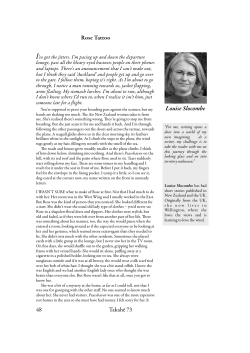
Multiflora Rose (Rosa multiflora)
Weed Identification and Control Sheet: Multiflora Rose (Rosa multiflora) www.goodoak.com/weeds DESCRIPTION: Multiflora rose is an invasive shrub introduced to North America in the mid-20th century in a misguided effort to provide a species suitable for “living fences” and wildlife food. Never mind the fact that our native roses, raspberries and other shrubs already do this very well. Eventually it began to spread across the landscape and it now proliferates anywhere from woodlands to hedgerows to open fields. This species is well known for its nasty recurved thorns which catch on clothing as you walk past and which seem to “fight back” when you work to control this species. If you find a “wild rose” growing on your property, it is more than likely this plant. IDENTIFICATION: Multiflora rose gets its name from the clusters of quarter-sized white to light pink, five-petaled flowers which bloom in late spring and early summer. Red, pea-sized rose hips persist into winter. These flowers and fruit are much smaller, but more numerous, than their native counterparts. It grows up to 10’ tall (typically 3-5’) with arching, spreading, green, waxy branches which are covered in large, sturdy curved thorns. These plants have compound leaves with typically seven (sometimes five), dime to quarter sized leaflets. One key diagnostic feature is a small flap of leafy material called a stipule at the base of each leaf (not the leaflets, but the whole leaf). In multiflora rose, this stipule is formed of hair-like or tooth-like projections. In our native roses it is a solid, entire leaf-like structure. Also, our native roses typically have fewer (typically five, sometimes seven) larger leaflets and smaller, straight thorns. CONTROL METHODS: Wear full-coverage, thick clothing to protect yourself on the sharp thorns. Chemical: The most effective way to control multiflora rose is to cut the stems down as close to the ground as possible, then apply concentrated herbicide to the stump. Triclopyr (Garlon® 4, Brush-B-Gon®) is the most effective herbicide for cutstump or basal bark application to multiflora rose, but glyphosate (Round-Up® etc.) will have some effect if that is all that is available. Mowing and brushcutting can ‘knock back’ multiflora rose, making it easier to manage with a foliar application of triclopyr to the resprouting leaves. Always read herbicide labels carefully before use and always apply according to the instruction on the product label. Organic: Multiflora rose can be controlled without herbicide using repeated cutting or mowing, if you are extremely diligent about cutting resprouts rapidly as they occur. This will allow you to exhaust the energy stores within the plants roots. The best time of year to begin is late spring when they have fully leaved-out (and may be flowering) as this is when the plant’s energy reserves are lowest. Then, revisit each stump every 2-3 weeks to cut new growth, until the plant dies, which can take up to 2 years. If the plants are allowed to develop mature leaves they will begin to acquire energy from the sun, thus retarding your progress. Regular prescribed fire is important in natural areas to prevent the establishment of this species and help control, but not eliminate individuals that are already established. NATIVE ALTERNATIVES: Pasture rose (Rosa carolina), early wild rose (Rosa blanda) and Illinois rose (Rosa setigera) are all beautiful native roses with large, pink open-faced flowers and large rose hips in the fall and winter. These species, particularly R. carolina tend to be lower growing than multiflora rose. For a more upright plant, black raspberries (Rubus occidentalis), common raspberry (Rubus idaeus var. strigosus) and blackberries (Rubus allegheniensis) are thorny native brambles that give the same “living fence” effect as multiflora rose, with attractive white flowers in late spring and succulent fruit in the summer. All content © Frank Hassler 2015, unless otherwise noted. Updated: 4/23/15
© Copyright 2025









